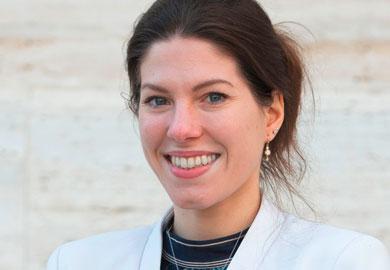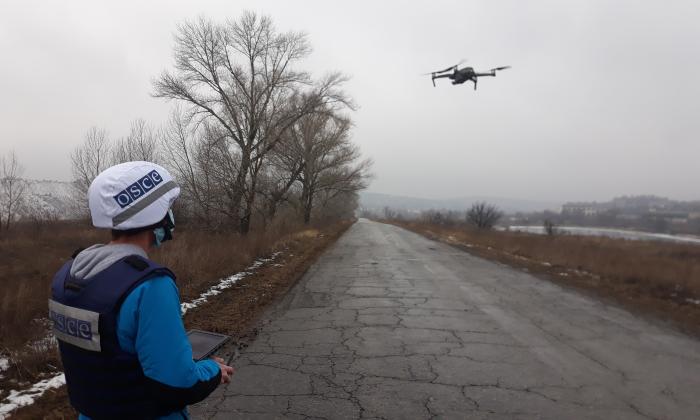What role can technology play in enabling remote ceasefire monitoring and verification?
Supporting the implementation of mandated tasks through digital technologies | Sarah Grand-ClémentCeasefires play an important role in the prevention of further conflict and armed violence. Not only are they a crucial component of the broader conflict-prevention toolkit, but they are often a first step towards a peace agreement. According to data from the Peace Agreement Database, eight countries benefited from one or more ceasefire agreements in the last five years, and hundreds of ceasefires having been agreed upon over the past few decades, with the aim being to stop or end ongoing conflict.
There are many different types of ceasefires, which can vary from looser to more rigorous arrangements. However, ceasefires which include a monitoring and verification arrangement are particularly beneficial to ensuring a more durable arrangement, as these aim to build trust and collaboration between the conflict parties by observing and reporting on a specified set of activities, in order to avoid prohibited behaviours from taking place or recurring.
While ceasefire monitoring and verification is usually conducted by in-person monitors, this may not always be possible due to non-permissive environments. For example, the use of technology by OSCE Special Monitoring Mission to Ukraine, which operated between 2014 and 2022, was notably driven by the need to keep mission staff further removed from harm’s way. It was also influenced by the fact that the mission had to manage a very large geographic area using limited human resources.
In such instances, technology can help overcome these challenges, as well as extend the range of monitoring and the pace of data synthesis. It can however be difficult to know what technologies are available for use, and how these can be best employed, particularly given the sensitivity of a ceasefire context.
What technologies could be used in a ceasefire context?
The use of technology is not novel within ceasefire monitoring and verification. For example, the United Nations Peacekeeping Force in Cyprus has used cameras with motion sensors to monitor the buffer zone. Another example of technology use is by the United Nations Multidimensional Integrated Stabilization Mission in Mali which has used radars, aerostats and uncrewed aerial systems (UAS) to monitor physical activities and has also monitored radio transmissions to detect non-physical aggression, such as hate speech.
A new report by the United Nations Institute for Disarmament Research (UNIDIR) explores what technologies are available – and how technology writ large should be considered. In the context of this report, the term “technology” encompasses tools - both hardware and software - as well as approaches, in other words, ways in which technology can be used. This report divides relevant technologies applicable for remote ceasefire monitoring and verification across three categories: data acquisition, data analysis and communications.
Data acquisition technologies mainly involve sensors of various types, such as acoustic, infrasound, motion and visual sensors, the latter of which can be incorporated on platforms such as UAS, helicopters, aerostats, satellites or just be stationary. Beyond sensors, data acquisition technologies can also include approaches to collecting data from social media and news media, as well as more exploratory technologies which have not seen much or any application in the ceasefire context, such as radio-frequency identification tags or biometric capabilities.
Data analysis and communications technologies play a more cross-cutting and supporting role in terms of aiding synthesise and assess the data received – such as by using data fusion techniques and artificial intelligence – and facilitating communications between the relevant actors within the ceasefire.
The use of technology in a ceasefire – or broader peacekeeping – context should be with the aim to maximise benefits of the technology in aiding to achieve the mission’s goals, while limiting potential issues.
Additionally, technologies can be combined to work together or to leverage each other’s advantages. This can include, for example, using different types of sensors or other technologies in combination to collect data which can then be triangulated and merged to form a more detailed overview of a situation. In a similar sense, technologies can be used jointly; for example, advanced binoculars, satellite imagery and data scraping could be used in combination in order to obtain a range of different information.
As such, there exists a broad range of technologies, and it is important to understand how these can be best applied and how they can offer the most added value. The UNIDIR report offers a way to conceptualise how these technologies can be considered within a ceasefire context, by providing a mapping of these technologies against a set of broad ceasefire activities, the aim being to help identify which technologies can be best suited to aid with different activities.
For example, the identification of use of weapons and ammunition can be aided by data gathered through acoustic or infrasound sensors, or even images captured by static or mobile cameras. On the other hand, while data scraping offers limited applicability within this activity, it can play a key role in monitoring for propaganda and hate speech.
The importance of going beyond a technology-centric approach
However, focusing only on what types of technology exist to enable remote ceasefire monitoring and verification is too narrow and omits other equally important issues. Such issues include the suitability of the technology, its deployability, as well as questions around its governance.
In practice, this means moving away from a purely technology-centric approach to considering broader aspects of its use such as:
- Does the ceasefire mechanism’s mandate allow for the use of technology?
- Are the identified technologies appropriate for use given local circumstances and history?
- If a technology, or set of technologies, are used, what may be the (unintended) implications of technology use that the mission should plan for?
- Does the mission have sufficient financial resources and technical know-how to enable the (proper) use of a technology?
- Can the selected technology be used given the specific climate and terrain, or based on the existing infrastructure?
- How could the use of technology impact on the issue of trust, such as trust in the monitors or trust between the conflict parties?
- What might be the impacts, if any, if the technology is hacked, jammed, or taken by conflict parties or other actors?
- How can we avoid putting individuals and their private and personal information at risk when using certain types of technology?
As these questions show, while technology may have its own limitations and challenges, there are broader points and issues to be aware of – many of which have applicability beyond a ceasefire context and into other fragile contexts, including peace operations more widely, where the use of technology is being considered and applied.
What are some possible next steps?
The use of technology in a ceasefire – or broader peacekeeping – context should be with the aim to maximise benefits of the technology in aiding to achieve the mission’s goals, while limiting potential issues. In this respect, several overarching points can be made regarding the role of technology and possible next steps.
First, humans play and will continue to play a key role in ceasefires but drawing on the strengths of both technology and humans can help balance out their respective limitations. For example, technology can act as a force multiplier, by helping gather more and varied types of information or aid in the analysis of data, while humans play an essential role in building dialogue and trust and will continue to be key in gathering information, especially in areas where technology is either unwelcome or inappropriate.
Second, given technology is agnostic of the intended purpose, it is possible to think creatively as to the role and purpose of technology. In other words, how technology is used can be guided by the needs of the mission. For example, technology can be used to monitor or verify that incidents have not occurred, but it can equally be used to enable dialogue or map progress made by conflict parties, rather than incidents.
Third, the use of technologies to-date within ceasefires has been mainly limited to aiding with monitoring tasks through the acquisition of data. While it is true that technology can blur the lines between monitoring, verification, analysis, and communications, there has been more limited use of analytical technologies. Indeed, analysis activities so far tend to remain a human-led task, although there are shifts in the direction of employing analytical technology, so far particularly in terms of aiding with data that has been scraped or obtained from news and social media. As analytical technologies continue improving, there may be continued shifts in this direction.
Fourth, all technologies have their limitations and challenges, and a single technology may not be able to adequately provide the needed support on its own. As such, combining a range of technologies in a coherent manner could help leverage their benefits while offsetting their respective limitations. This can also help improve confidence in the data collected and means there is redundancy across the data-collection system.
Fifth, trust in technology plays a very important role in terms of whether one or several technologies are accepted and used in a ceasefire context. While it is true that misused technologies can erode trust, technology could conversely be used to build trust. Overall, the issue of trust in relation to technology – particularly in a context as sensitive as a ceasefire – should not be underestimated.
Finally, it is important to consider good practices to embed in the future regarding the use of technology, most of which apply beyond just the ceasefire domain. These for example could include systematically considering the broader issues related to the use of technology. It could mean encouraging multi-stakeholder approaches to bridge the knowledge gap between the technology, ceasefire, military, local and other relevant experts. It could also involve monitoring the evolution of conflicts and related ceasefire agreements to identify new areas where monitoring and verification may be required – such as the cyberspace – in order to understand and prepare for the future of ceasefire monitoring and verification.
IMAGES
- Author | Sarah Grand-Clément priv.
- Teaser | © UN
- OSCE, drone | © OSCE

